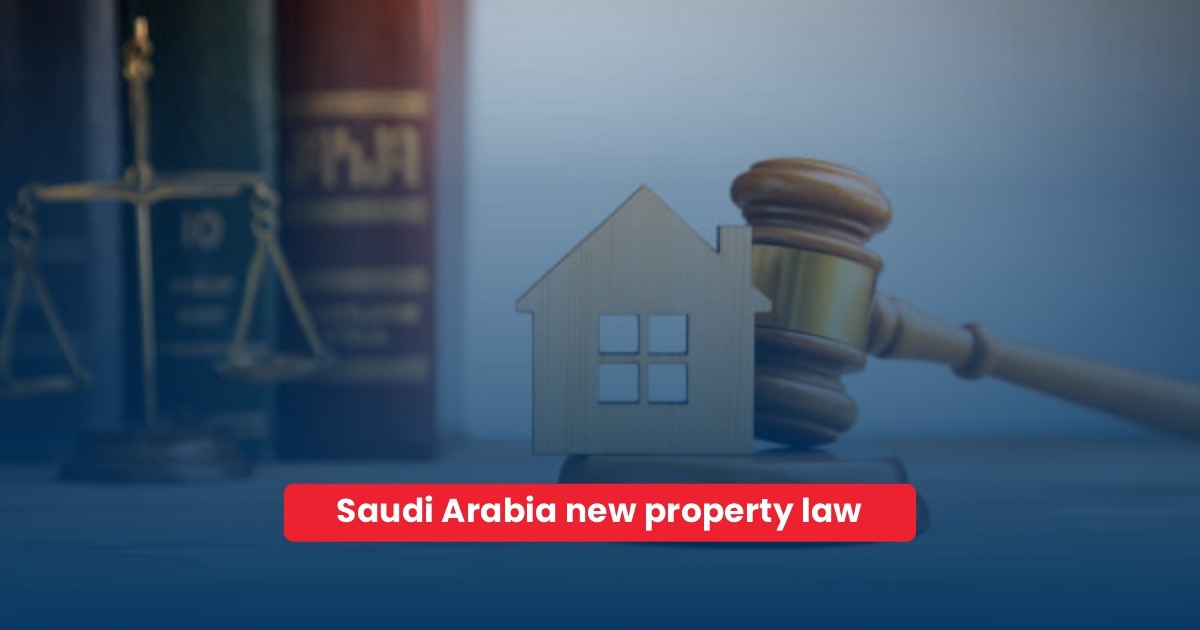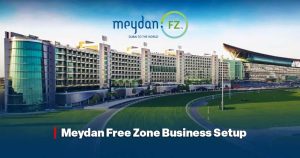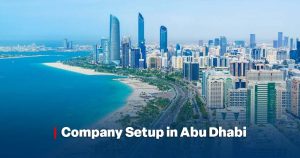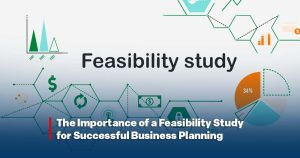Real estate market growth in Saudi Arabia is moving faster than ever. Prices are rising, laws are changing, and new cities are gaining attention. But before you make a move, you need answers. What’s driving demand? Where should you invest? How do new rules affect buyers?
This article breaks down 9 key questions shaping the Saudi real estate market in 2025. If you’re serious about buying or investing, you can’t afford to miss this.
Table of contents
|
Why the Saudi Real Estate Market Is Growing Fast in 2025?
The Saudi real estate market is moving quickly, and for clear reasons. With a growing population, modern infrastructure, and strong government backing, the sector is gaining steady momentum. The new property law, set for full rollout in 2026, is already making headlines. Below is a full breakdown of what’s fueling this market—and why experts expect it to keep growing.
Important Factors Fueling the Saudi Real Estate Market’s Growth
- The game was altered by Vision 2030: It caused the country’s attention to shift from oil to real estate, tourism, and the expansion of the private sector.
- Major infrastructure is in progress: New airports, metro lines, and highways make more areas liveable and attractive.
- Population growth adds pressure: More people, especially youth, need homes in Riyadh, Jeddah, and beyond.
- The new property law opens access: From 2026, foreign buyers can legally own property, even in sensitive areas.
- Foreign investors show rising interest: Legal reforms build trust, and stable returns draw global attention.
- Government initiatives assist homebuyers: Programs such as Sakani provide citizens with access to housing loans and financial support.
- Mega projects boost regional demand: NEOM, Red Sea, and Qiddiya require homes, hotels, and business spaces.
- Tourism creates new real estate needs: Events like Expo 2030 and FIFA 2034 bring hotel and short-stay demand.
- Urbanization is shaping new zones: people move from rural to urban areas, particularly those close to employment hubs.
- Financing is more accessible: Banks now offer better terms and longer payment plans for first-time buyers.
Quick Facts and Current Trends
| Factor | Why It Matters |
| Vision 2030 | Focus on cities, tourism, and economic variety |
| Youth Population | More buyers, more homes needed |
| Legal Clarity | Safer buying under clearer laws |
| Mega Projects | New cities require real estate |
| Government Housing Aid | Wider access to homes for citizens |
| Foreign Ownership Rules | Expands investment pool with global capital |
| Infrastructure Growth | Better transport links increase land value |
| Urban Shift | The population moving into cities |
| Tourism Expansion | Higher demand for resorts, rentals, and hotels |
| Mortgage Improvements | Easier financing for both locals and residents |
The Saudi real estate market is not growing by chance. It’s moving fast due to smart planning, legal changes, and real demand. Buyers, investors, and developers all have reason to act now. Because everything—laws, population, economy, and infrastructure—is pointing in the same direction.
How Saudi Arabia’s New Property Law Changes Homebuying in 2026
Starting January 2026, Saudi Arabia’s landmark property law reshapes opportunities for local and foreign homebuyers. Here’s exactly what this means for you:
1. Opens ownership widely
- For the first time, foreigners can buy homes in major cities like Riyadh and Jeddah, expanding options beyond Saudi nationals.
2. Cuts costs significantly
- Property transaction taxes drop from 10% to just 5%, making purchases more affordable immediately.
3. Links to residency
- Buy a home worth ≥SAR 4 million? You’ll qualify for Premium Residency, easing long-term stays and family sponsorship.
4. Targets speculation
- Bans foreigners from buying undeveloped land purely for investment, stabilizing prices for actual residents.
5. Simplifies processes
- All paperwork flows through digital platforms like Absher, slashing approval times to ~5 days.
6. Protects holy cities
- While direct ownership in Mecca/Medina remains restricted, long-term leases (up to 99 years) offer alternatives.
7. Boosts housing supply
- New foreign investment will accelerate construction, easing shortages in high-demand urban areas.
8. Standardizes rules
- GCC nationals now enjoy the same ownership rights as Saudis, streamlining cross-border investments.
9. Strong legal rules protect your rights
- Clear property laws reduce fraud and make ownership more secure
10. Banks offer better mortgage terms
- Clearer laws give lenders more confidence to support buyers
11. Illegal activity faces strict punishment
- Developers and agents must follow clear rules or face serious penalties
Key Financial Impacts for Homebuyers
| Aspect | Pre-2025 | 2026 Onward |
| Foreign Ownership | Highly restricted (Iqama required) | Allowed in designated zones |
| Property Tax | 10% transaction fee | Reduced to 5% |
| Residency Benefit | Not linked to property | Linked to Premium Residency (SAR 4M+ property) |
| Approval Time | Took weeks or months | Around 5 business days |
Tax Changes at a Glance
| Fee Type | Rate | Notes |
| Transaction Tax | 5% | Paid at the time of property purchase |
| Title Registration | ~1% | Calculated based on the property’s value |
| White Land Tax | 2.5% | Applies only to undeveloped land plots |
This law isn’t just about ownership—it’s about affordability, speed, and fairness. Expect easier buying, lower costs, and a more open market come January. For locals, this means fresh inventory; for expats, a chance to plant roots.
Which Cities Are Best for Real Estate in Saudi Arabia?
The Saudi real estate market is growing fast. With the 2026 new property law now active, more zones are open to foreign buyers. Some cities offer better returns, faster processes, and stronger demand. A brief list of the best places to think about is provided below.
9 Top Cities to Invest in Saudi Real Estate
Riyadh
- The capital leads in deals and demand.
- Vision 2030 projects and steady price growth make it a key hotspot.
- Demand is fueled by significant developments like King Salman Park and New Murabba.
- Prices rose 10% recently, especially for villas.
Jeddah
- A commercial hub and coastal city. It offers rental stability, tourism appeal, and luxury property growth.
- Gateway to the Red Sea, it thrives on trade and tourism.
- Importantly, opportunities are increased by the influx of religious tourists and the future Jeddah Tower, which will be the tallest in the world.
Dammam
- Close to oil operations and ports.
- Property is more affordable here, with long-term rental opportunities.
- Energy hub anchored by Aramco.
- Industrial growth and King Abdulaziz Port access drive logistics real estate.
Khobar
- Preferred by expats and professionals.
- Calm lifestyle, access to schools, and strong rental demand.
- Coastal luxury shines here. High-end apartments near business centers yield 9%+ rental returns.
Mecca
- 99-year lease options meet the year-round demand for religious tourism, notwithstanding ownership restrictions.
Medina
- Like Mecca, it offers lease-based investment.
- High visitor flow drives short-term rental value.
NEOM
- A tech-driven, future-ready zone.
- Early investors see it as a smart long-term play with global attention.
- 460K new jobs will spike housing needs.
Red Sea Project
- Focused on high-end tourism.
- New resorts are opening, making it a luxury real estate destination.
Diriyah
- A mix of history and premium housing.
- This cultural site near Riyadh is growing fast in value.
Saudi Arabia’s new property law (effective 2026) eases foreign ownership, except in Makkah/Medina. For long-term gains, prioritize cities linked to Vision 2030 projects. Riyadh and NEOM lead, but secondary cities like Jubail and Najran offer affordable entry points.
City Snapshot and Investment Highlights
| City/Project | Main Advantage | Why It’s a Smart Pick |
| Riyadh | Vision 2030 + high demand | Government support, rental growth |
| Jeddah | Trade + tourism hub | Mix of housing and hospitality |
| Dammam | Industry + low entry cost | Long-term renters, business location |
| Khobar | Expat lifestyle | Waterfront, schools, peaceful living |
| Mecca | Religious focus | 99-year lease options, steady flow |
| Medina | Pilgrimage economy | Short-term rental potential |
| NEOM | Future megacity | Tech, smart living, early-stage investment |
| Red Sea Project | High-end tourism | Hospitality projects, eco-luxury developments |
| Diriyah | Heritage + luxury | Premium residential near capital |
These cities lead the real estate market in Saudi Arabia due to strong infrastructure, mega-projects, and buyer-friendly rules. Whether you’re looking for high yields, tourism-linked rentals, or early entry into a new zone, each location has something to offer.
Where to Invest Based on Your Goal?
| City | Why Choose It | Average Price (per sqm) | Foreign Ownership |
| Riyadh | Business hub, strong demand | SAR 4,000–6,500 | Yes |
| Jeddah | A coastal city, stable rental income | SAR 3,500–5,800 | Yes |
| Dammam | Affordable, near Bahrain | SAR 2,800–4,200 | Yes |
| Khobar | Expats and families prefer it | SAR 3,000–4,700 | Yes |
| Medina | Religious, lease options only | SAR 6,000–9,000 | Lease only |
| Mecca | Religious, high visitor flow | SAR 7,000–10,000 | Lease only |
| Abha | Cool climate, tourism potential | SAR 2,300–3,800 | Yes |
Pro Tip: Target mid-income housing—it’s underserved yet high-demand. Also, Expo 2030 and FIFA 2034 will spike hospitality real estate value.
What Type of Property Sells Fastest in Saudi Arabia?
Saudi Arabia’s real estate market is changing fast. In 2025, demand is shaped by price, purpose, and how easy it is to buy. With the new property law now in effect, more buyers—especially foreigners—can act quickly. If you’re planning to invest in saudi arabia or sell, knowing what moves fastest helps you stay ahead.
Fast-Selling Property Types in 2025
- Mid-range apartments in Riyadh: Buyers want homes near metro lines, malls, and government-backed zones. Units near Riyadh Metro stations sell 30% faster. Why? They offer 15-20% value premiums. Renters also prefer them for easy commutes.
- Ready villas in Jeddah and Khobar: These attract families looking for space and peace of mind. Move-in-ready units sell faster.
- Studio flats in Dammam and Khobar: Low prices and steady demand from professionals make these units easy to resell.
- Hotel leaseholds in Mecca and Medina: 99-year lease units offer strong returns due to constant religious tourism.
- Off-plan homes in NEOM and Diriyah: Early investors enter at lower prices and expect future growth.
- Land plots in Abha and Taif: Saudis often buy to build second homes. The cool weather adds appeal.
- Mixed-use units in Red Sea or city centers: Properties that combine living, shopping, and working sell fast to modern buyers.
- Commercial spaces in Riyadh and Jeddah: Small retail units near business districts are in demand after SME support.
Target turnkey villas in Riyadh’s suburbs. They sell the fastest due to demand from Saudi families. Avoid undeveloped land—foreign speculation bans slow sales.
Fastest-Selling Property Types in Saudi Arabia
| Property Type | Why It Sells Fast | Best Locations | Avg. Price (SAR) |
| Mid-range Apartments | Affordable, near services | Riyadh, Jeddah | 500K–800K |
| Ready Villas | Space, family appeal | Khobar, Riyadh suburbs | 800K–1.3M |
| Studio Units | Low cost, high rental demand | Dammam, Khobar | 300K–500K |
| Leasehold Hotel Units | 99-year leases, constant tourism | Mecca, Medina | 1.2M–2.5M |
| Off-plan Homes | Early pricing, future growth | NEOM, Diriyah | 700K–1.5M |
| Residential Land | Build-to-own, cool climate appeal | Abha, Taif | 250K–400K |
| Mixed-use Apartments | Lifestyle and rental income | Red Sea Coast, Riyadh | 600K–1.2M |
| Small Retail Spaces | SME growth, stable income | Riyadh, Jeddah | 1M–2.2M |
The real estate market is competitive. Smart buyers choose based on what sells quickly, not just price: location, unit type, and timing matter. Now, if you’re selling, concentrate on what customers desire. If you’re buying, go where growth is clear and demand stays strong.
5 Top Investment Opportunities in the Saudi Real Estate Market
Saudi Arabia’s real estate market is expanding fast. Vision 2030, strong demand, and new property law reforms now make it one of the region’s top investment hubs. Investors can explore several property types based on budget, goals, and risk.
1. Residential Properties
- Includes apartments, villas, and compounds.
- Popular in Riyadh, Jeddah, and Dammam.
- Driven by government housing initiatives like Sakani and local demand.
- Offer consistent rental income and lower risk.
- Government-backed incentives protect long-term investments.
- Ideal for conservative investors seeking stability.
- Require ongoing maintenance and tenant management.
2. Commercial Properties
- Cover offices, retail shops, and malls.
- Offer higher rental yields than residential units.
- Often come with long-term tenant contracts.
- Prime locations can bring strong capital appreciation.
- Sensitive to market shifts and business cycles.
- Higher setup and legal costs than other property types.
3. Industrial Properties
- Include warehouses, factories, and logistics hubs.
- Backed by Vision 2030 and industrial zone development.
- Offer long-term leases with corporate tenants.
- Lower management costs and strong demand from SMEs.
- Require proper location analysis and permits from the Ministry of Industry.
- High initial investment but strong future growth potential.
- Perfect for investors that share Saudi Arabia’s industrial objectives.
4. Hospitality and Tourism Real Estate
- Focused on hotels, resorts, and serviced apartments.
- High potential in cities like Makkah, Medina, AlUla, and the Red Sea coast.
- Driven by tourism growth and heritage site expansion.
- Offer seasonal peaks and premium nightly rates.
- Need professional property and guest service management.
5. Real Estate Investment Trusts (REITs)
- Let you invest without owning physical property.
- Offer exposure to income-generating real estate projects.
- Listed on the Saudi Stock Exchange (Tadawul).
- Lower entry cost, more liquidity, and less direct risk.
- Ideal for investors seeking passive income.
Saudi Real Estate Investment Types
| Property Type | Ideal For | Key Cities | Pros | Cons |
| Residential | Low-risk investors | Riyadh, Jeddah | Steady income, strong demand | Lower ROI, ongoing maintenance |
| Commercial | High-return seekers | Business zones | High yield, long-term leases | Sensitive to economic shifts |
| Industrial | Long-term strategic play | Industrial zones | Strong growth, low operating costs | High startup costs, permits needed |
| Hospitality/Tourism | Seasonal investors | Mecca, Red Sea | Premium returns, tourism demand | Market fluctuation, skilled management |
| REITs | Passive investors | Nationwide | No direct ownership, lower risk | Less control over assets |
The real estate sector in Saudi Arabia has expanded beyond residential properties. The alternatives have expanded as a result of law revisions and Vision 2030. Whether you’re risk-averse or growth-focused, there’s a path to suit your strategy. Always research location, permit rules, and market trends before investing.
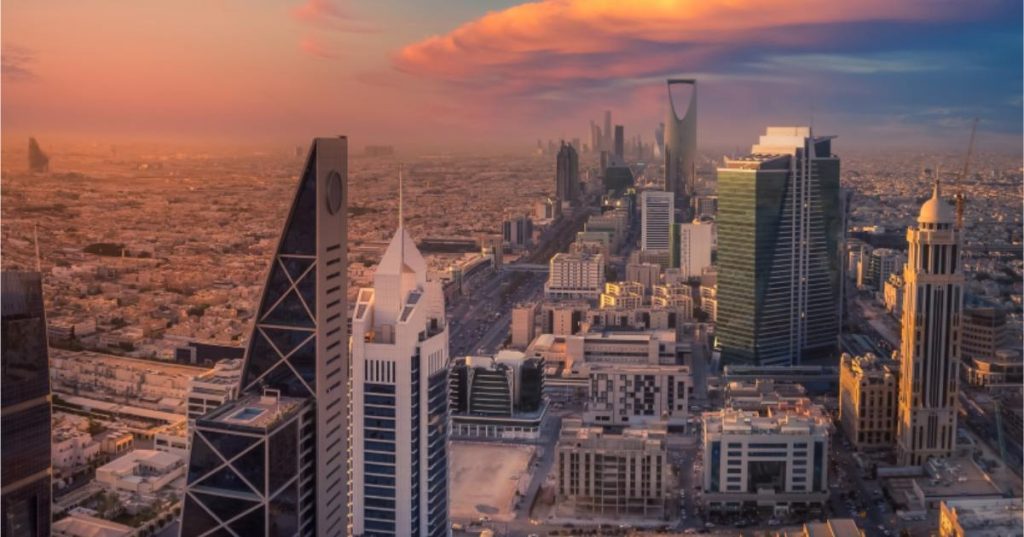
How to Check if a Property Is Legal in Saudi Arabia (2026 Guide)
Before buying any property in Saudi Arabia, check everything. Legal mistakes cost money, time, and stress. The new property law makes things easier, but you still need to act smart. Use official tools, get expert help, and never rely on promises.
Here’s a simple checklist.
Legal Steps to Verify Property
1. Ask for the title deed
- This confirms the seller owns the property.
- To check it online, go to the Ministry of Justice’s website, Najiz.sa.
- Make sure the name, area, and details match.
2. Review seller documents
- Check the seller’s national ID or commercial license.
- asking for the property’s official title deed.
3. Search for legal issues
- Use Najiz to see if there are any active cases on the property.
- You can also ask the municipality to confirm no disputes or blocks.
4. Confirm zoning and land use
- Is it residential? Commercial? Check local municipality records.
- Make sure the land is approved for your planned use.
5. Check for mortgages or unpaid debts
- Ask for a no-objection certificate.
- Search for legal claims or liens that might block your sale.
6. Ask for permits if it’s built
- If it’s a villa or apartment, confirm the building has approved permits.
- Use the Balady platform to verify.
7. Check the broker’s license
- Use the REGA portal to make sure the agent or broker is officially registered.
- Licensed brokers follow strict rules and charge lower commissions.
8. Confirm that foreign ownership is allowed
- Non-Saudis must buy in approved zones like Riyadh, Jeddah, or NEOM.
- Makkah and Madinah allow only 99-year leases.
9. Consult a real estate lawyer
- Consider hiring a licensed real estate lawyer to review all documents and contracts. It’s the most effective way to avoid risk.
- For joint or inherited property, every heir must approve the sale.
Legal Property Check – What to Do and Where to Do It
| Step | Why It’s Important | Where to Check |
| Title Deed | Confirms seller’s legal ownership | Najiz.sa (Ministry of Justice) |
| Seller ID / CR | Confirms authority to sell | National ID or CR documents |
| Legal Dispute Check | Avoids buying disputed property | Najiz / Local Municipality |
| Zoning and Land Use | Makes sure land is used legally | Municipality / Korooki Maps |
| Mortgage / Liens Check | Confirms no debts on the property | Notary Public / Najiz |
| Building Permits | Validates legal construction | Balady Platform |
| Broker License | Protects from scams | REGA Registered Brokers List |
| Foreign Buyer Eligibility | Ensures the zone allows foreign ownership | Property Law Zones List (via REGA) |
| Legal Review | Final contract check | Licensed Saudi Real Estate Lawyer |
Saudi Arabia’s real estate system is clearer now—but only if you use the right steps. Don’t skip checks. Use digital tools. Ask questions. And never sign before you verify.
This protects your money, time, and future.
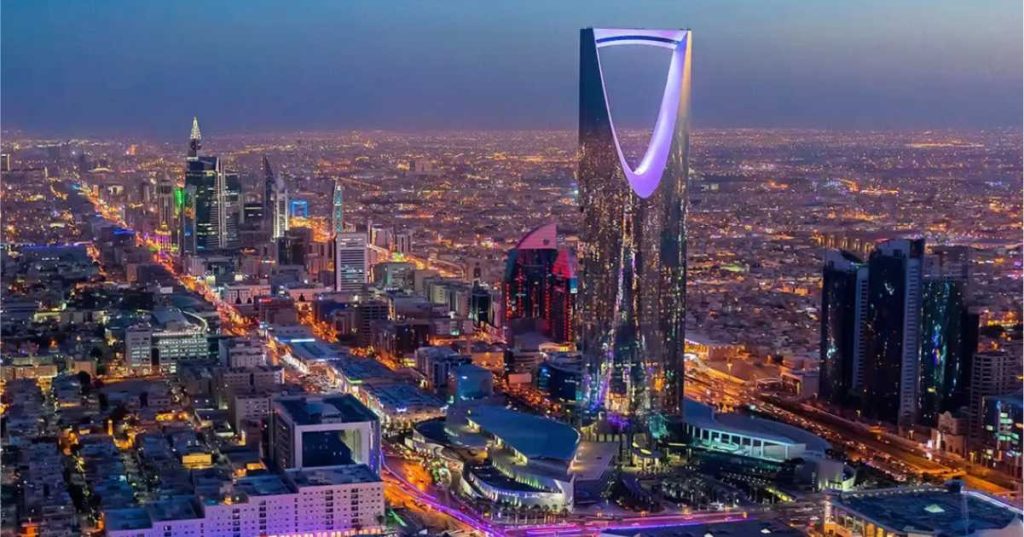
What Drives Demand in the Saudi Real Estate Market Today?
The real estate market in Saudi Arabia is seeing a major shift. Demand is rising across cities due to changing buyer needs, economic growth, and government reforms. Buyers care about location, affordability, and future value. This demand is shaped by practical needs, not just trends. Here’s what pushes the market forward today.
- Urban population growth increases housing needs: More Saudis are moving to cities like Riyadh and Jeddah. This raises demand for affordable apartments and ready villas.
- Vision 2030 projects boost investor interest: Massive developments like NEOM and Qiddiya attract early investors who want long-term gains at lower prices.
- Mortgage reforms make home buying easier: More banks now offer flexible loans. This allows younger Saudis to buy homes earlier than before.
- The new property law allows more foreign buyers: Expats can now buy in approved zones. This change adds new demand from Gulf residents and international investors.
- Mixed-use developments attract modern families: Buyers prefer areas where homes, shops, schools, and hospitals are within walking distance.
- High rental yields attract income-focused buyers: Properties in Red Sea resorts, Abha, and Mecca offer strong returns due to steady tourism.
- SME growth drives demand for small commercial units: More entrepreneurs mean higher sales of retail spaces and offices, especially in city business hubs.
- Infrastructure projects increase land value: New roads, metros, and airports raise prices in nearby neighborhoods. Buyers rush to buy before prices rise further.
Buyers now focus on access, value, and income. Sellers should follow these patterns to match what people truly want. This approach helps you stay ahead in the market. Always think like the buyer.
Vision 2030’s Role in Transforming Saudi Arabia’s Real Estate Market
Vision 2030 changed how real estate works in Saudi Arabia. It shifted focus from oil to long-term urban development. Today, it drives more housing, business growth, and foreign investment. Below are the most important benefits this plan brings to the real estate market.
- Vision 2030 made housing a top goal. This increased construction in cities like Riyadh and Jeddah.
- The government partnered with developers. As a result, more homes are built faster and cheaper.
- New economic zones need workers. This means demand for housing in NEOM and Qiddiya is rising.
- Tourism plans help real estate near heritage sites and Red Sea resorts.
- Metro projects and new roads have raised land values in areas once ignored.
- New systems like “Najiz” make property ownership clear and trackable.
- The new property law lets foreigners buy in specific areas. This grows investment from outside.
- Financial support like the Sakani program makes it easier for locals to buy homes.
- Tech platforms now help buyers check legal status in minutes.
- These changes give both locals and investors long-term confidence.
How Vision 2030 Supports Real Estate Growth
| Vision 2030 Goal | Real Estate Impact | Main Areas |
| Boost housing supply | More affordable homes for locals | Riyadh, Jeddah, Eastern Province |
| Attract foreign investors | Easier property buying after the law change | NEOM, Red Sea, Riyadh |
| Grow tourism | Demand for hotels, rentals, and land nearby | Medina, Red Sea, AlUla |
| Expand infrastructure | Land prices increased near key projects | Metro lines, airports, and roads |
| Use digital tools | Faster legal checks and safer transactions | Nationwide via Najiz.sa |
Vision 2030 made real estate part of national progress. With better laws, clear rules, and strong support, the market keeps growing. Whether you’re a buyer or investor, now is the time to act.
What are the key trends driving growth in the Saudi real estate market?
Saudi Arabia’s residential real estate market is growing fast. Prices are rising, mortgage lending is expanding, and buyer preferences are shifting. These trends reflect strong government backing, economic reforms, and a rising urban population.
1. Residential Price Movement: Villas Lead the Market
Prices continued to rise in Q4 2024, especially in villas and apartments. This indicates a rise in demand in places like Dammam, Jeddah, and Riyadh.
Residential Property Price Trends – Q4 2024
| Property Type | YoY Price Change (%) | Inflation-Adjusted Change (%) |
| Villas | 6.5% | 4.5% |
| Apartments | 2.9% | 1.0% |
| Residential Lots | 2.5% | 0.6% |
| Single-Floor Homes | -0.7% | -2.5% |
- Villas are in high demand for family housing, especially in secure gated communities.
- Apartments continue to appeal to young families and first-time buyers.
- Lots are gaining value in expanding suburbs.
- Single-floor homes are losing popularity in high-density cities.
2. Strong Growth in Residential Rental Demand
Rental rates have increased across key urban centers. High population growth and limited supply in central areas drive this trend.
- Riyadh: 10% rise in rental rates in Q3 2024
- Jeddah: 8% increase in the same period
- Apartments in compounds are especially in demand by expats and locals
3. Urban Shift: From Standalone Homes to High-Density Living
Buyers now prefer vertical living and mixed-use zones. This is driven by access to services, security, and lifestyle quality.
- Apartments in integrated communities are gaining value.
- Villas in suburban compounds see increased demand from mid-income families.
- Single-floor homes in older districts are slowly declining in price and interest.
4. Government Housing Goals Drive the Market
Saudi Arabia targets 70% homeownership by 2030.
- As of early 2024, ownership reached 63.74%.
- Both the supply and demand sides are supported by government initiatives.
- Projects are focused on affordable housing in high-growth areas.
5. Mortgage Market Expansion
Mortgage lending is one of the biggest drivers of growth. Access is easier, and younger buyers dominate loan applications.
Saudi Mortgage Market Growth (2024)
| Indicator | Value |
| New Mortgage Loans (Jan–Nov 2024) | +13.6% YoY |
| Total Value of New Loans | SAR 79.12 billion (US$21B) |
| Mortgage to GDP Ratio (2024) | 21% |
| Mortgage to GDP Ratio (2010) | 3% |
- Growth in mortgage financing is due to lower down payments and government guarantees.
- Programs like REDF and SRC support long-term stability in the housing market.
6. Role of Sakani and REDF in Housing Access
The Sakani Program and Real Estate Development Fund (REDF) have made homeownership more accessible.
- Buyers can secure zero-interest loans and down payment support.
- Government-backed mortgages reduce default risk.
- Developers receive land and financial incentives to build within program zones.
7. Who Is Driving Demand?
- Young Saudis (under 35) now make up over 60% of the population.
- Urban migration is rising as more families move to cities for work and education.
- Expats continue to rent in secure compounds near key employment hubs.
8. Key Investment Signals
- Focus on apartment projects in high-density zones.
- Invest in villas in gated suburbs near new metro lines.
- Avoid outdated single-family homes in low-growth areas.
Saudi Arabia’s residential property market is strong, stable, and growing. Price trends, rental yields, and mortgage data all point to solid investment potential. Government programs back demand and make financing easier. Urban living is on the rise, and younger buyers dominate the shift.
If you’re investing, focus on apartments and villas in growth zones. If you’re developing, prioritize integrated communities. The future of housing in Saudi Arabia is dense, financed, and backed by policy.
Summary
If you’re planning to invest, buy, or just understand the current trends, now’s the time to act. The real estate market is changing fast, and informed decisions matter. Always check legal steps, study demand, and focus on growth areas. For trusted help with real estate in Saudi Arabia, Business LinkUAE makes the process clear, legal, and easier for you. Start smart today.
FAQ’s
Is buying a home in the Saudi real estate market a smart move now?
Yes. Demand for housing is increasing. Prices are rising slowly but steadily.
Also, new infrastructure makes many areas more attractive. If you’re buying for living or long-term investment, now is a good time. Just compare areas before you decide.
Can foreigners invest in the Saudi real estate market?
Yes, in many areas. Foreigners can buy homes or commercial units in approved zones.
Rules vary, so always check the city’s real estate authority.
Some areas allow long-term leases instead of full ownership. Get advice from a certified property agent.
What risks should buyers know in the Saudi real estate market?
Risks include unclear ownership, slow construction, or poor project delivery. Always check developer history and legal records. Also, compare similar units in the same area. Work with registered agents to avoid fraud. Ask for full documents before paying.
How does the Saudi real estate market compare to other Gulf countries?
The Saudi real estate market is one of the largest in the Gulf. It benefits from vast land and strong government support. Unlike some neighbors, Saudi Arabia allows foreign ownership with fewer restrictions. The market offers a wider variety of projects, from luxury to affordable housing. This diversity attracts both investors and residents.

